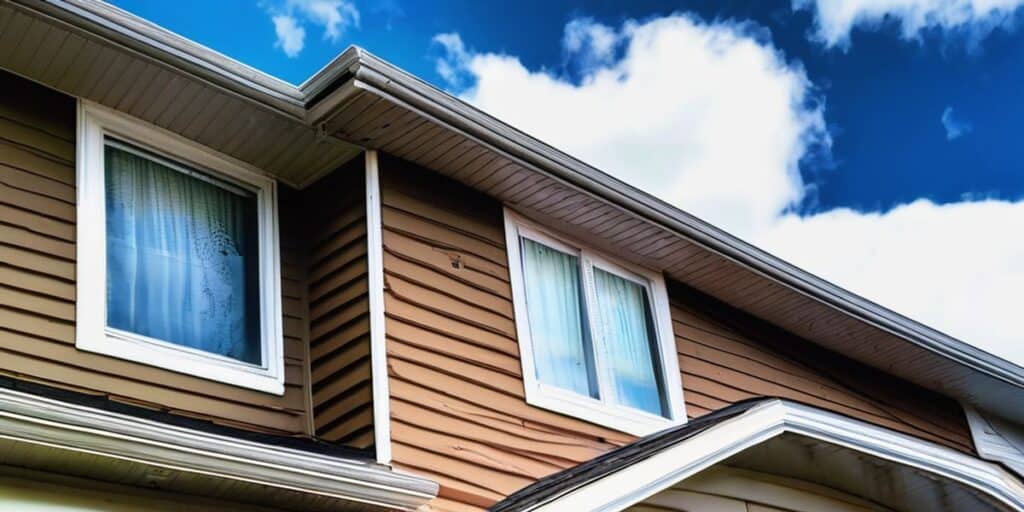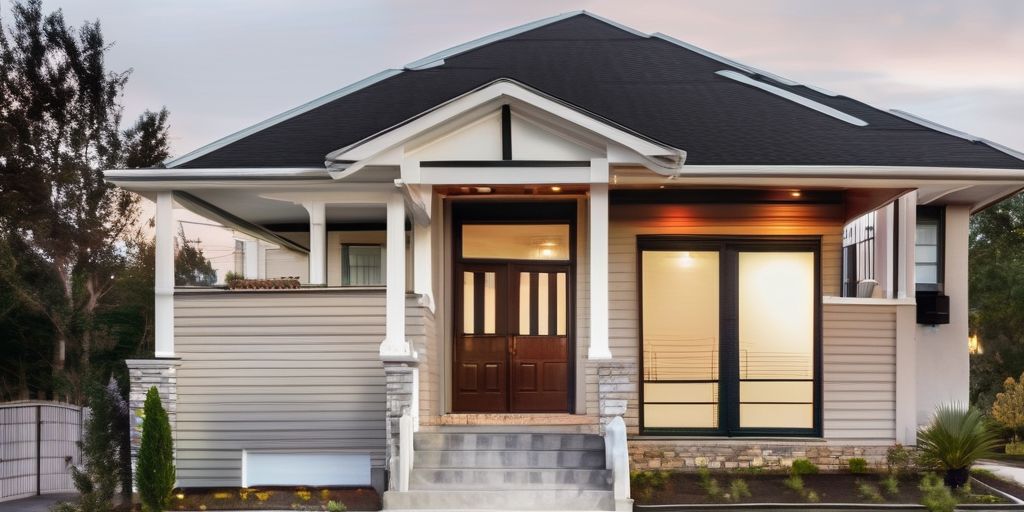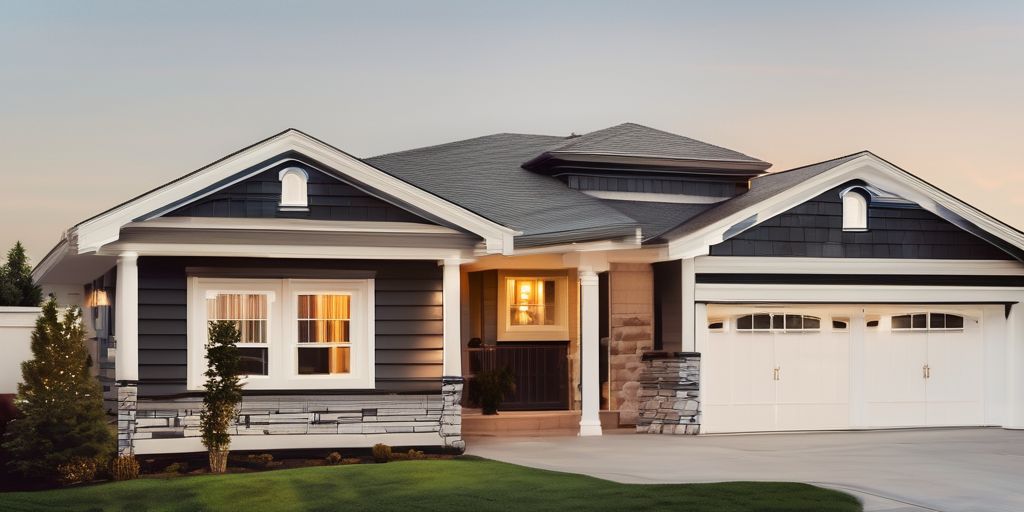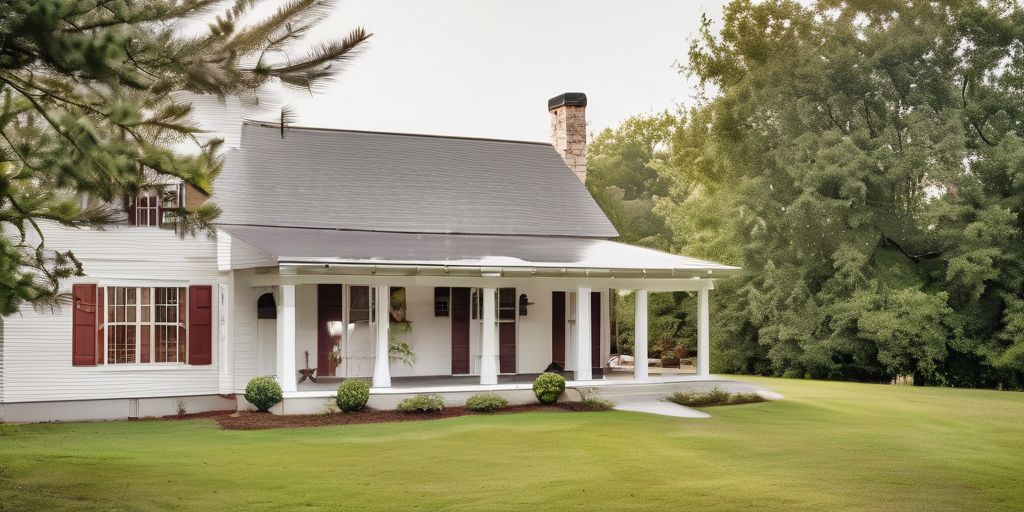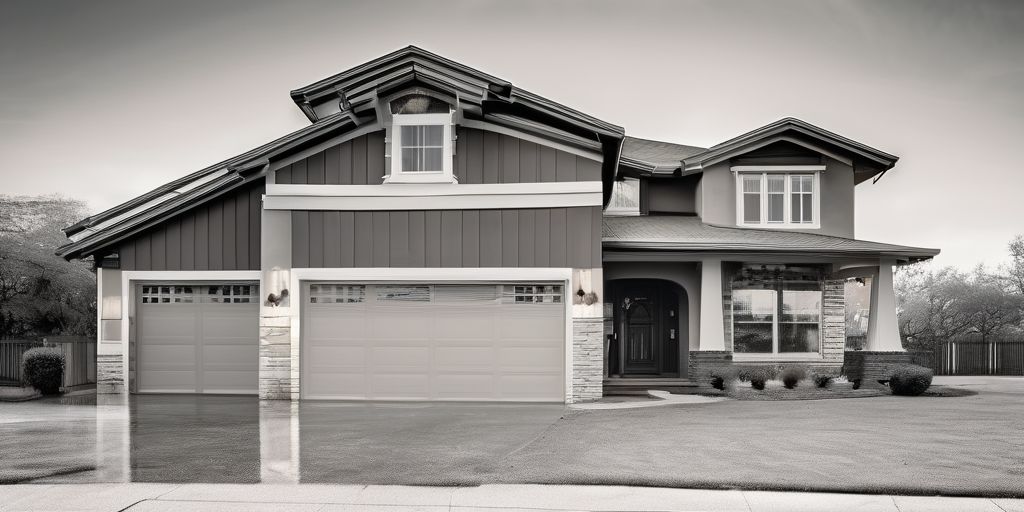In the city of Guelph, achieving uniform spray painting coverage is essential for various industries, from automotive to furniture manufacturing. This article explores the strategies to ensure even and consistent spray painting, focusing on the underlying techniques, comparison of coating methods, addressing large-scale painting challenges, innovative approaches for improved uniformity, and practical tips for consistent coverage. By understanding the complexities of spray painting and implementing the right approaches, businesses in Guelph can enhance the quality and efficiency of their coating processes.
Key Takeaways
- The choice of spray painting strategy depends on the substrate size and type, surface roughness, and desired film thickness, with hydrophobic materials posing particular challenges for uniformity.
- Different coating methods, including extrusion, blade, bar, dipping, and roll coating, offer various advantages and limitations, influencing their suitability for mass production and scalability.
- Achieving uniform spray painting on a large scale requires careful consideration of material and process variables, as well as the skill and experience of the operator in manual coating applications.
- Advanced coating technologies and material innovations, such as nano additions or substitutes, can enhance coating uniformity while also addressing environmental and health safety concerns.
- Practical tips for consistent spray painting coverage include selecting the appropriate coating material and viscosity, preventing interlayer dissolution, and employing energy-efficient drying and solvent evaporation techniques.
Understanding the Basics of Spray Painting Techniques
The Role of Substrate Size and Type
Achieving uniform spray painting coverage begins with a thorough understanding of the substrate’s characteristics. The size and type of the substrate are fundamental factors that influence the final appearance and durability of the coating. Here are some key considerations:
- Surface preparation is crucial; it involves cleaning and possibly treating the substrate to enhance paint adhesion.
- The substrate’s material can affect paint adherence and drying time, with different materials requiring specific paint formulations.
- Large substrates may pose challenges in achieving even coverage without overspray or dry spots.
Proper substrate preparation and understanding material properties are essential for a successful spray painting project.
It’s also important to consider the environmental factors that can impact the painting process. For instance, the humidity and temperature in Guelph can affect paint application and drying times. While not a landmark, the local climate should be taken into account for optimal results.
Navigating Surface Roughness and Film Thickness
Achieving a uniform spray paint finish requires careful consideration of both surface roughness and film thickness. Surface roughness can significantly affect the paint’s adhesion and final appearance. Here are some key points to consider:
- Surface preparation is crucial. Ensuring the substrate is clean and smooth can enhance wettability and adhesion.
- The thickness of the coating plays a pivotal role. While a thicker layer may increase strength, it can also lead to issues such as squeeze-out.
- It’s important to fill substrate grooves with the coating material to avoid air pockets that weaken adhesion.
To prevent the formation of gas pockets, the coating should flow and spread at the micro/nanoscale onto the substrate.
Surface free energy is another aspect that influences the wetting step of heat-sealing. Materials with higher surface energy tend to adhere better. Techniques like corona discharge are used to increase surface free energy and improve wetting properties. However, such treatments can also introduce new challenges.
Remember, the goal is to achieve a balance between the surface characteristics and the desired film thickness for a professional finish. Consider the workspace setup and local climate, as these factors can impact the drying and curing process.
The Impact of Hydrophobic Materials on Uniformity
Achieving uniform coverage during spray painting can be particularly challenging when dealing with hydrophobic materials. These materials often repel the paint due to their low surface energy, which can lead to a non-uniform finish. Understanding the interaction between the paint and the substrate is crucial for ensuring a consistent application. Here are some factors to consider:
- Surface preparation: Ensuring the substrate is clean and properly prepared can improve paint adhesion.
- Paint formulation: Adjusting the paint to better match the hydrophobic nature of the substrate can help in achieving uniform coverage.
- Application technique: Mastering spray gun techniques and adjusting spray patterns can minimize the effects of hydrophobicity.
When considering materials with high hydrophobicity, particularly for use as robust barriers against water vapor, waxes are often a primary consideration. However, the challenges of achieving uniformity with such materials should not be underestimated.
In Guelph, where the climate can influence painting conditions, it’s important to account for the potential impact of humidity and temperature on the behavior of hydrophobic materials during the spray painting process.
Comparing Coating Methods for Optimal Results
Advantages and Limitations of Spraying Techniques
Spray painting is a widely used technique for applying coatings to various substrates due to its ability to cover large areas quickly and with minimal material waste. Spray techniques are particularly advantageous when dealing with any substrate size, ensuring versatility across different projects. However, achieving uniform coverage can be challenging, especially when working with substrates that have a complex shape or texture.
Spraying requires careful control of coat weights to obtain sufficient barrier properties, often necessitating multiple layers to eliminate surface pinholes. This can be particularly true for substrates with chemical or physical sensitivity, which may face limitations in liquid media. Additionally, the process of drying and solvent evaporation is notably energy-intensive, which can be a significant consideration in large-scale operations.
While spraying offers the benefit of minimal polymer use, it is crucial to manage the thicker layer ends to avoid uneven layers, which can compromise the finish quality.
The table below summarizes the key advantages and disadvantages of spray painting techniques:
| Coating Method | Advantage | Disadvantage or Limitation |
|---|---|---|
| Spraying | Minimal polymer use; suitable for any substrate size | Thicker layer may result in uneven coverage; energy-intensive drying |
In the context of Guelph, where diverse manufacturing industries thrive, the choice of coating method must be tailored to the specific needs of the project, taking into account the type of substrate and desired film thickness.
Extrusion Coating: Achieving Uniformity and Continuity
Extrusion coating stands out as a continuous process that significantly reduces the likelihood of pinholes and cracks, ensuring a uniform coating. This method is particularly beneficial for applications that require high coat weight to achieve desired properties. Moreover, it is a solvent-free application, which aligns with environmental safety standards.
- Continuous processing minimizes defects in the coating.
- High coat weight necessary for certain material properties.
- Solvent-free application promotes a safer work environment.
Despite these advantages, challenges such as melt instability of the polymer and material properties can affect the efficiency and speed of the coating process. It is crucial to manage these factors to maintain the high standards of uniformity and continuity that extrusion coating can provide.
The operator’s skill and experience play a critical role in achieving an even and consistent coating, especially when the process involves manual intervention.
In the context of Guelph, where professional painting services emphasize durable, high-quality finishes, mastering the intricacies of extrusion coating can be a valuable asset. While the city is known for landmarks like the University of Guelph Arboretum, the precision and efficiency of local industrial coating processes also contribute to the region’s reputation for excellence in manufacturing and production.
The Precision of Blade and Bar Coating Methods
Blade and bar coating methods are renowned for their precision in achieving uniform coating thicknesses, especially on flat surfaces. The blade coating technique offers good control over the coating thickness, making it suitable for applications where precise film thickness is critical. It is also adaptable for solvent-free applications, which is beneficial for both environmental and health safety considerations.
Blade coating is characterized by its ability to produce large-area homogeneity with little material waste. This method is particularly effective in preventing interlayer dissolution, a common challenge in achieving uniform coverage. The quick-drying step associated with blade coating circumvents the need for traditional solvent annealing, enhancing the efficiency of the process.
Bar or rod coating, on the other hand, provides better control over the thickness of the coating layer through the selection of the rod’s groove or notch size. This method is versatile in applying coatings of different materials, including liquids, and is relatively simple and cost-effective. However, it is important to note that the coating material viscosity and formulation affect the performance of the coater instrument, and the operator’s skill and experience are critical to achieving an even and consistent coating.
While blade and bar coating methods are confined up to pilot scale or laboratory settings, they offer a glimpse into the potential for scaling up to industrial production without compromising on quality.
In summary, both blade and bar coating methods provide distinct advantages for achieving precision in coating applications. The choice between the two will depend on the specific requirements of the project, such as the desired coating thickness and the type of surface being coated.
Dipping and Roll Coating: Balancing Quality and Efficiency
Dipping and roll coating are two prevalent methods for achieving uniform spray painting coverage, each with its distinct advantages and considerations. Dipping is known for its quick application, affordability, and high-quality results, making it suitable for both laboratory and industrial settings. On the other hand, roll coating, while offering a continuous process with minimal chances of pinholes and cracks, is characterized by its use of non-Newtonian fluids, which can exhibit pseudoelastic or viscoelastic behavior.
When considering dipping and roll coating, it’s essential to recognize the limitations such as the coating thickness range and the time required for cleanup during changeovers. Moreover, the operator’s skill and experience play a crucial role in achieving an even and consistent coating, especially when applied manually.
To ensure optimal performance, factors such as coating material viscosity and formulation must be carefully managed. While these methods are relatively simple and cost-effective, they do come with challenges such as limited speed range and the need for high coat weight to achieve desired properties. Here’s a quick comparison of the two methods:
- Dipping: Quick, affordable, easy, high-quality coating
- Roll Coating: Continuous processing, minimal pinholes/cracks, limited thickness range
In the context of Guelph, where environmental sustainability is valued, selecting eco-friendly coatings can enhance the balance between quality and efficiency, ensuring durability in various weather conditions without compromising on environmental benefits.
Addressing the Challenges of Large-Scale Spray Painting
Scaling Laboratory Methods to Industrial Production
When transitioning from laboratory methods to industrial-scale spray painting, several key factors must be considered to maintain uniform coverage and quality. Scaling up requires meticulous planning and adaptation to ensure that the precision achieved in small-scale applications translates effectively to larger projects.
- Material and Cost Considerations: It’s crucial to evaluate the cost-effectiveness of materials used in the lab when scaling up. This includes assessing the long-term stability and safety of these materials in larger quantities.
- Substrate and Surface Challenges: The size and type of the substrate, along with its surface roughness and the desired film thickness, play a significant role in the uniformity of the final coating.
- Technique Adaptation: Techniques such as spraying or spin coating may face challenges when applied to large or hydrophobic surfaces, potentially leading to non-uniform layers.
While laboratory methods provide a controlled environment for perfecting coating processes, industrial-scale applications demand robust solutions that can withstand the variables of mass production.
In the context of Guelph, where diverse manufacturing industries thrive, ensuring that these considerations are integrated into the scaling process is essential for achieving professional results akin to the precise spray painting highlighted in articles from other regions.
Material and Process Considerations for Large Areas
When tackling the challenge of achieving uniform spray painting coverage over large areas, several material and process considerations come into play. Precision and care are essential, not only for the aesthetic appeal but also for the longevity and protection of the surface. Tailored equipment that can handle specific challenges is crucial for professional-quality results.
- Weather resistance: Equipment and materials must be chosen with the local climate in mind to ensure durability.
- Surface coverage: The type of sprayer and its calibration play a significant role in achieving even coverage.
- Durability of materials: Quality materials contribute to the longevity of the paint job.
Attention to detail in the selection of materials and the calibration of equipment ensures a finish that stands the test of time and elements.
In Guelph, where the weather can be unpredictable, it’s important to consider the local architecture and environmental factors that may influence the painting process. For instance, the proximity to the Speed River may affect humidity levels, which in turn can impact drying times and the overall finish.
Operator Skill and Experience in Manual Coating
The success of manual spray painting is heavily reliant on the exterior painter‘s skill and experience. Achieving a uniform coat over large surfaces requires a steady hand and a keen eye for detail. Here are some key considerations for manual coating:
- Understanding the equipment: Familiarity with the spray gun’s settings and adjustments is crucial for consistent application.
- Technique refinement: Developing a methodical approach to overlapping strokes ensures complete coverage without excess.
- Physical stamina: Manual coating can be physically demanding, requiring endurance to maintain precision over extended periods.
It’s important to note that while technology can assist, the human element in manual spray painting is irreplaceable. The finesse and adaptability of a skilled painter can significantly influence the final outcome.
In Guelph, where the architectural landscape includes both modern and historical structures, the expertise of a painter becomes even more pivotal. Whether it’s a commercial building downtown or a residential property near the University of Guelph Arboretum, the right technique can make all the difference.
Innovative Approaches to Improve Coating Uniformity
Exploring Advanced Coating Technologies
Advanced coating technologies are revolutionizing the way we approach uniform spray painting coverage. Innovations in application methods and material formulations are key to achieving the desired results. Here are some of the cutting-edge techniques currently being explored:
- Electrostatic spraying: Enhances adhesion and reduces overspray.
- Ultraviolet (UV) curing: Offers rapid drying times and a durable finish.
- Plasma treatments: Improve surface wettability for better coating adhesion.
These technologies not only aim for uniformity but also strive to increase efficiency and reduce environmental impact.
It’s important to consider the compatibility of these technologies with the materials being coated. For instance, UV curing may not be suitable for heat-sensitive substrates. Similarly, electrostatic spraying requires conductive materials to be effective. As we continue to explore these advanced options, the goal remains clear: to achieve a consistent and high-quality finish across various applications.
While Guelph is known for its historic landmarks like the Basilica of Our Lady Immaculate, it’s the advancements in coating technologies that could make it a hub for modern manufacturing excellence.
Material Innovations: Nano Additions and Substitutes
In the pursuit of uniform spray painting coverage, material innovations play a pivotal role. Nanotechnology has introduced a range of nano additives and substitutes that enhance the properties of coatings. These include:
- Nanoparticles that improve durability and resistance to environmental factors.
- Nano-fillers that offer antimicrobial properties and extend the shelf-life of products.
- Nano-coatings that provide advanced hydrophobic characteristics, ensuring better water resistance.
It’s crucial to ensure the safety of these components, as some nanoparticles can pose health risks. Engineering solutions aim to minimize environmental leakage and enhance public safety. Additionally, research is ongoing to find cost-effective alternatives that maintain performance standards.
The integration of nanotechnology in coatings not only improves product longevity but also contributes to eco-friendly practices by reducing waste and enhancing the efficiency of spray painting processes.
In Guelph, the application of such advanced materials could be particularly beneficial for maintaining structures exposed to the variable weather, such as the historic Basilica of Our Lady Immaculate. The use of nano-enhanced coatings could help preserve the beauty and integrity of such landmarks for years to come.
Environmental and Health Safety in Coating Processes
Ensuring environmental and health safety in coating processes is paramount. The selection of coating materials must prioritize human health and eco-friendliness. It’s essential to assess the safety of all components, particularly when incorporating nanoparticles, which can be hazardous. Creative engineering approaches aim to minimize environmental leakage of such particles.
Eco-friendly paints and coatings are not just a trend but a necessity, especially considering local climates that may affect the longevity and performance of the coating. For instance, Oakville’s climate demands high-quality, eco-friendly paint. In Guelph, the selection of paints for aluminum siding should factor in both sustainability and durability to ensure long-term success without compromising safety.
When scaling up from laboratory methods to industrial production, it is crucial to address safety material costs and ensure long-term stability of the coating.
Here are practical steps to enhance safety in coating processes:
- Use paints and coatings that are free from allergic components and harmful chemicals.
- Conduct thorough migration studies to ensure that no harmful substances can leach into the environment.
- Implement continuous research and development to find cost-effective and less hazardous substitutes for expensive nano additions.
- Ensure that processing methods are scalable without compromising safety standards.
Practical Tips for Achieving Consistent Spray Painting Coverage
Selecting the Right Coating Material and Viscosity
Achieving a uniform spray painting coverage begins with selecting the appropriate coating material and its viscosity. The viscosity of the paint plays a pivotal role in how it flows and adheres to surfaces, impacting the final appearance and quality of the coating. Here are some key considerations:
- Coating material viscosity and formulation affects the performance of the coater instrument.
- The synergy of coating rheology and film formation is required for a smooth and integrated coating layer.
- Adding a plasticizer can improve the coating coverage and homogeneity on various substrates.
It’s essential to understand that different surfaces may require different viscosities for optimal results. For instance, a rougher surface might need a thicker paint to fill in the crevices, while a smoother surface could be better served with a thinner consistency to avoid drips and sags.
When preparing for a spray painting project, always practice on a test surface to gauge the paint’s behavior and make necessary adjustments before proceeding to the final piece.
Remember, the goal is to achieve a pinhole-free and uniform high barrier coating that adheres well and looks great. Whether you’re working on a small DIY project or a large-scale industrial application, taking the time to select the right coating material and viscosity will pay off in the quality of your finished work.
Techniques for Preventing Interlayer Dissolution
Achieving a uniform and durable finish in spray painting requires careful attention to the prevention of interlayer dissolution. This phenomenon can lead to compromised coating integrity and uneven surfaces. Here are some techniques to mitigate this issue:
- Ensure proper surface preparation before applying subsequent layers. This includes cleaning, degreasing, and sometimes applying a primer to promote adhesion.
- Use compatible coatings that are less likely to react with each other. This involves understanding the chemical composition of each layer.
- Apply each layer within the appropriate time frame to allow for adequate bonding without premature mixing of layers.
- Control environmental conditions, such as humidity and temperature, to reduce the chances of condensation between layers.
By adhering to these practices, operators can significantly reduce the risk of interlayer dissolution, leading to a more reliable and consistent finish.
In addition to these steps, regular maintenance of the spray equipment is crucial. A well-maintained spray gun ensures a consistent application rate and pattern, which is essential for professional-quality finishes. Selecting high-quality paints also contributes to better coverage and durability, minimizing the potential for interlayer issues.
Energy-Efficient Drying and Solvent Evaporation Methods
Achieving a uniform spray painting coverage not only depends on the application technique but also on the drying and solvent evaporation process. Proper drying is crucial to prevent defects such as blistering, bubbling, sagging, or solvent popping. Here are some strategies to ensure energy-efficient drying and solvent evaporation:
- Utilize low-viscosity coating compositions that require less solvent and, consequently, less energy for evaporation.
- Implement drying methods that are sensitive to the substrate type to avoid over-application of heat and energy.
- Explore the use of alternative solvents, such as supercritical fluids or biomass-derived solvents, which may offer lower energy consumption during evaporation.
While traditional drying methods can be energy-intensive, advancements in coating technology allow for more efficient processes that reduce energy consumption without compromising quality.
Factors such as temperature, humidity, and wind can significantly impact the drying process. It’s essential to control these environmental conditions to minimize overspray and achieve a professional finish. In Guelph, where the weather can vary, paying attention to these factors is especially important for outdoor spray painting projects.
Achieving a flawless finish in spray painting requires precision, skill, and the right techniques. At We Paint Siding, we specialize in providing consistent coverage and a stunning look for your home’s exterior. Our team of experts uses advanced equipment and high-quality materials to ensure a durable and attractive finish. Don’t settle for less when it comes to beautifying your home. Visit our website to learn more about our services and to book a free estimate. Let us help you transform your property with our professional spray painting solutions.
Conclusion
In summary, achieving uniform spray painting coverage in Guelph requires careful consideration of the coating methods available, each with its unique set of advantages and limitations. Whether it’s the adaptability of blade coating, the efficiency of extrusion coating, or the simplicity of bar or rod coating, the choice must align with the project’s specific needs regarding substrate size, surface roughness, and desired film thickness. It’s essential to balance the cost-effectiveness of the materials and processes with the quality requirements of the final product. As we’ve explored, the skill and experience of the operator also play a crucial role in ensuring an even and consistent coating. With the right approach, Guelph’s industries can continue to innovate and apply coatings that meet high standards of uniformity and performance.
Frequently Asked Questions
What factors affect the uniformity of spray painting coverage?
Uniformity in spray painting is affected by the substrate size and type, surface roughness, film thickness, and material properties such as hydrophobicity. Operator skill and the choice of coating method also play significant roles.
What are the advantages and limitations of spraying techniques?
Spraying techniques use minimal polymer and can accommodate any substrate size, but they may result in uneven layers, especially with thicker coatings. They also require low coat weights to achieve sufficient barrier properties and can be limited by the chemical or physical sensitivity of the materials involved.
How does extrusion coating compare to other methods?
Extrusion coating offers continuous processing with minimal chances of pinholes and cracks, providing a uniform coating. However, it requires a higher coat weight to obtain desired properties and may face challenges with melt instability and material properties affecting coating efficiency and speed.
What should be considered when scaling up spray painting methods for large areas?
When scaling up, it’s important to consider the material and process adjustments needed for large areas, ensure that the coating method is suitable for mass production, and account for the operator’s skill and experience in manual coating.
What innovative approaches can improve coating uniformity?
Innovative approaches include advanced coating technologies, the use of nano additions or finding less expensive substitutes that provide comparable results, and considering environmental and health safety aspects in the coating process.
What practical tips can help achieve consistent spray painting coverage?
To achieve consistent coverage, select the right coating material and viscosity, use techniques to prevent interlayer dissolution, and employ energy-efficient drying and solvent evaporation methods to ensure quick and even drying.

